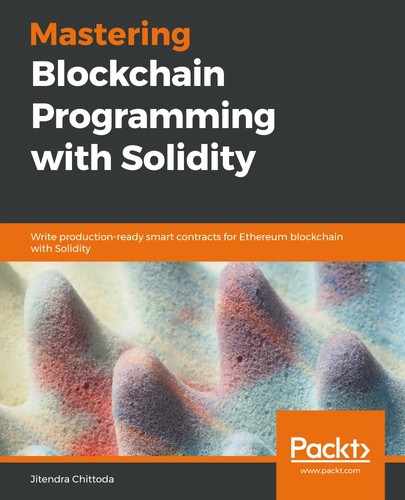Book Description
Discover the advanced features of Solidity that will help you write high-quality code and develop secure smart contracts with the latest ERC standards
Key Features
- Delve into Solidity and understand control structures, function calls, and variable scopes
- Explore tools for developing, testing, and debugging your blockchain applications
- Learn advanced design patterns and best practices for writing secure smart contracts
Book Description
Solidity is among the most popular and contract-oriented programming languages used for writing decentralized applications (DApps) on Ethereum blockchain. If you're looking to perfect your skills in writing professional-grade smart contracts using Solidity, this book can help.
You will get started with a detailed introduction to blockchain, smart contracts, and Ethereum, while also gaining useful insights into the Solidity programming language. A dedicated section will then take you through the different Ethereum Request for Comments (ERC) standards, including ERC-20, ERC-223, and ERC-721, and demonstrate how you can choose among these standards while writing smart contracts. As you approach later chapters, you will cover the different smart contracts available for use in libraries such as OpenZeppelin. You'll also learn to use different open source tools to test, review and improve the quality of your code and make it production-ready. Toward the end of this book, you'll get to grips with techniques such as adding security to smart contracts, and gain insights into various security considerations.
By the end of this book, you will have the skills you need to write secure, production-ready smart contracts in Solidity from scratch for decentralized applications on Ethereum blockchain.
What you will learn
- Test and debug smart contracts with Truffle, Ganache, Remix, and MetaMask
- Gain insights into maintaining code quality with different tools
- Get up to speed with ERC standards such as ERC-20 and ERC-721
- Become adept at using design patterns while writing smart contracts
- Use MultiSignature (MultiSig) wallets and improve the security of contracts
- Use Oracle services to fetch information from outside the blockchain
Who this book is for
This book is for developers and data scientists who want to learn Ethereum, blockchain, and Solidity to write smart contracts and develop production-ready code. Basic knowledge of Solidity is assumed.
Downloading the example code for this ebook: You can download the example code files for this ebook on GitHub at the following link: https://github.com/PacktPublishing/Mastering-Blockchain-Programming-with-Solidity. If you require support please email: [email protected]
